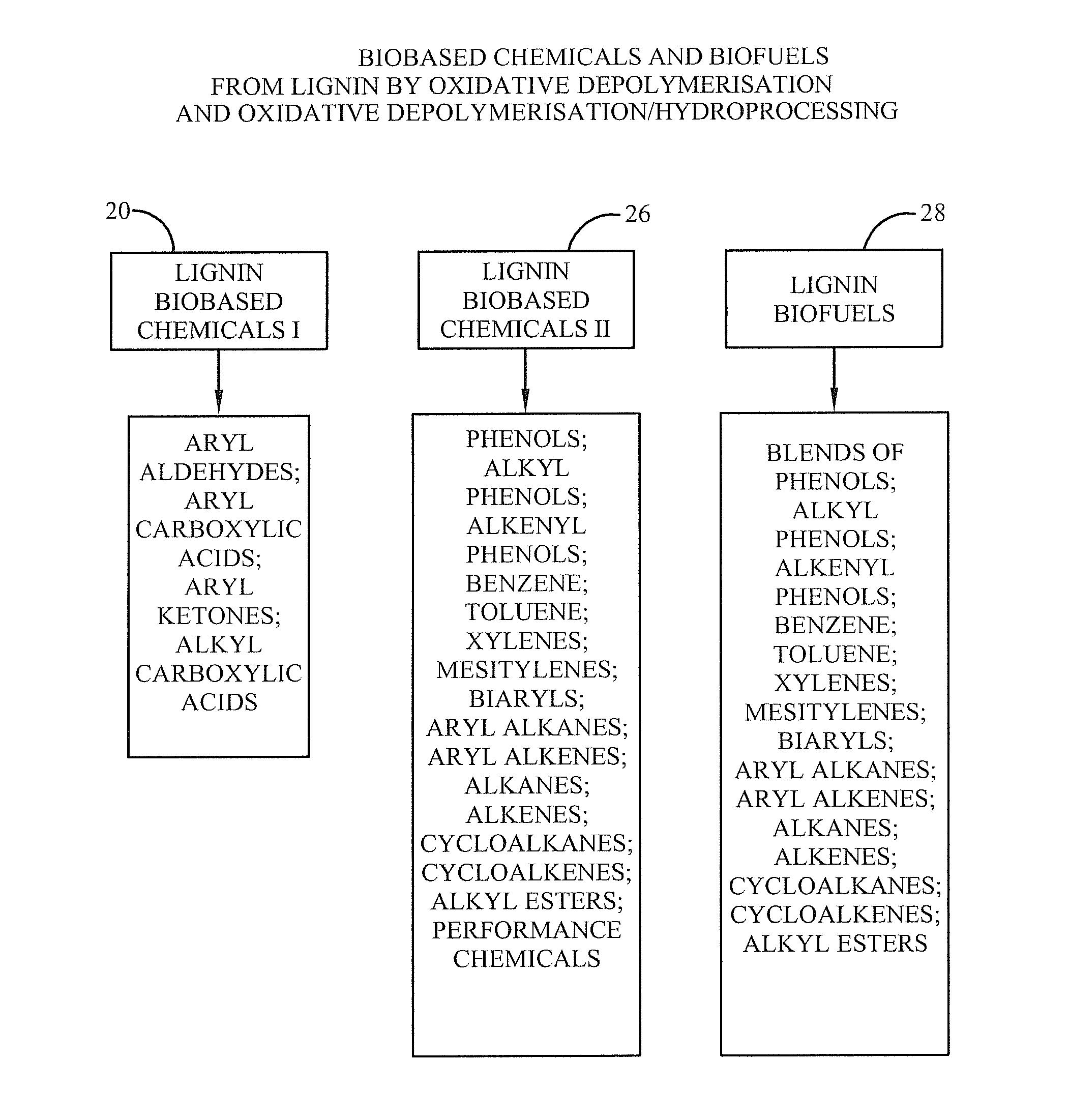Method for selective production of biobased chemicals and biofuels from plant lignin
- Summary
- Abstract
- Description
- Claims
- Application Information
AI Technical Summary
Benefits of technology
Problems solved by technology
Method used
Image
Examples
Embodiment Construction
[0234]Referring now to the drawings wherein the showings are for purposes of illustrating embodiments of the invention only and not for purposes of limiting the same.
[0235]FIG. 1 provides a schematic overview where lignin 16 may be provided from various sources. The sources for the lignin 16 may include fresh plant biomass 2, recovered biomass 4, commercial biomass fractionators 6, pulp and paper mills 8, cellulosic ethanol refineries 10, sugar can mills 12, and / or lignin residue biomass 14. In processing the lignin 16, it may be converted into other chemical-based products, as shown in FIG. 6.
[0236]Lignin 16 may be the most abundant source of aromatic chemicals outside of crude oil and coal. Lignin 16 can be used in developing technologies that transform various sources of biomass and lignin 16 waste into value-added aromatic chemicals. The sources of lignin 16 may include at least one biomass of plant biomass, woody plant biomass, agricultural plant biomass, and cultivated plant b...
PUM
| Property | Measurement | Unit |
|---|---|---|
| Temperature | aaaaa | aaaaa |
| Temperature | aaaaa | aaaaa |
| Temperature | aaaaa | aaaaa |
Abstract
Description
Claims
Application Information
 Login to View More
Login to View More - R&D
- Intellectual Property
- Life Sciences
- Materials
- Tech Scout
- Unparalleled Data Quality
- Higher Quality Content
- 60% Fewer Hallucinations
Browse by: Latest US Patents, China's latest patents, Technical Efficacy Thesaurus, Application Domain, Technology Topic, Popular Technical Reports.
© 2025 PatSnap. All rights reserved.Legal|Privacy policy|Modern Slavery Act Transparency Statement|Sitemap|About US| Contact US: help@patsnap.com



